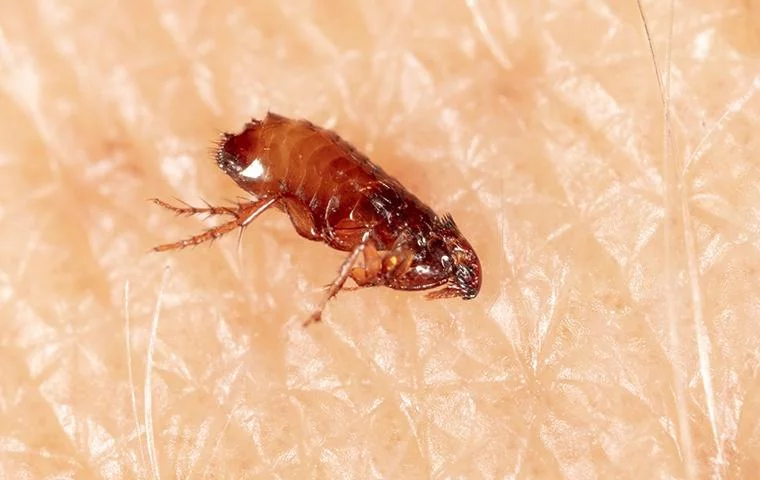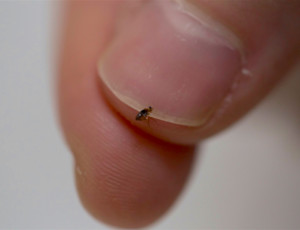Flea Treatments in Florida
Exterminator Services for Tampa, Lutz, Land O Lakes, Brandon, Wesley Chapel, Zephyrhills, Valrico, Riverview
Fleas are tiny yet bothersome pests that feed on blood and can jump onto pets or people before settling in a home. Florida’s warm climate favors fleas for much of the year, allowing them to remain active and often breed faster. In busy regions such as Tampa, Lutz, Land O Lakes, Brandon, Wesley Chapel, Zephyrhills, Valrico, or Riverview, fleas can move between properties on animals or transferred goods, quickly growing into a bigger issue if not halted. Below, you will learn why fleas stay common in Florida, how to notice their presence, and why a skilled flea exterminator delivering flea treatments in Florida is usually the best solution. You will also discover how to discourage fleas from returning once they are removed.
Reasons Fleas Multiply in Florida
- Warm Temperatures
Florida rarely experiences the freezing weather that can reduce flea numbers in some other regions. Fleas remain more active throughout many months, often completing several life cycles in a single season. - Humid Conditions
Flea eggs and larvae need moisture to avoid drying out. The high humidity across Tampa Bay and surrounding areas keeps them alive longer, supporting higher breeding success indoors or in shady outdoor spots. - Abundant Animal Hosts
From stray cats and dogs to wildlife like possums or raccoons, fleas have a steady flow of feeding opportunities. Pets returning from walks or roaming yards can bring fleas into homes, spreading them onto floors, carpets, or furniture. - Movement of People and Goods
Travelers, shipments, or secondhand items might bring fleas in hidden stages, such as eggs or larvae. With conditions so favorable, a few missed fleas can create a noticeable outbreak in a short time.

Clues of a Flea Infestation
- Pet Scratching or Grooming Repeatedly
Affected animals, whether dogs or cats, may gnaw at their back legs or neck. Some pets lose patches of fur or develop skin irritations from constant bites. - Specks on Fur or Bedding
Little black flecks on pet blankets or fur could be flea droppings. If placed on a damp paper towel, these spots may produce a reddish hue from digested blood. - Bites on People
Flea bites on humans often appear as small, itchy marks on ankles or lower legs. Multiple bites around the same area are common if fleas reside in carpets or on furniture. - Visible Fleas Hopping
Heavier infestations allow you to see fleas moving on floors, pet bedding, or sometimes socks if you walk through the house. Their quick jumps can make them easy to miss at first. - Pet Health Concerns
Severe infestations in kittens or puppies may lead to anemia, leaving them weak or restless. Adult animals might develop flea allergy dermatitis or transmit parasites like tapeworms.
Why Fleas Are a Concern
- Discomfort for People and Pets
Flea bites itch and can become red or inflamed. Pets may suffer stress or develop rashes, while people can lose sleep over repeated bites. - Possible Disease or Parasite Spread
Though less common, fleas can pass certain bacteria or tapeworms to pets or occasionally people. Preventing a spread early protects health. - Quick Reproduction
Female fleas lay multiple eggs daily, which drop into carpets or yard soil. These hatch into larvae and pupae before emerging as biting adults if not wiped out. - Ongoing Stress and Expense
Repeated bites and attempts to treat a large colony can create anxiety. Costly attempts at do it yourself measures might only yield partial relief, allowing fleas to persist.

Why a Flea Exterminator Matters
Some owners try sprays or bombs from the store, only to find fleas come back days or weeks later. Different stages of fleas often hide in deep carpet fibers or pet bedding folds, safe from simple surface sprays. A professional flea exterminator assesses each spot indoors and outdoors, applying specialized insect growth regulators that stop flea eggs or larvae from developing, along with adult killing methods. They also show owners how to sanitize pet bedding, vacuum floors, and remove yard debris, increasing the chance of total flea removal.
Our Flea Treatments in Florida
- Inspection and Mapping
We carefully check carpets, rugs, sofas, or corners near pet bedding for flea evidence, plus scan shady yard zones or spots under decks. Pinpointing the main flea clusters shapes our plan. - Targeted Product Application
After vacuuming to remove visible fleas and some eggs, we apply insect growth regulators and residual sprays that affect both adults and immature fleas. We focus on high traffic routes, pet resting places, and damp yard patches. - Occupant and Pet Safety
Residents or pets generally only avoid treated zones until the material settles or dries. We concentrate product use in corners, carpet edges, or lawns while maintaining a healthy indoor atmosphere. - Follow Up
Flea eggs can hatch days or weeks after first treatments, releasing new adults. Occupant vigilance or a second check ensures these emergent fleas do not restart the cycle. We confirm that owners wash pet blankets in hot water, vacuum floors often, and groom animals thoroughly.
Flea Issues in Tampa
Tampa’s busy urban to suburban settings host fleas that thrive if owners do not keep up with yard or pet maintenance. Pet owners often notice animals scratching after playing in grassy lawns or near water features where fleas wait for a passing host. Our approach typically covers interior floors and corners with insect growth regulators, plus yard edges or shaded spots with residual treatments. Occupant steps like storing pet kibble in sealed containers, removing yard debris, or trimming shrubs away from walls ensure fewer fleas can nest in hidden zones.
Nearby Towns: Lutz, Land O Lakes, Brandon, Wesley Chapel, Zephyrhills, Valrico, Riverview
These communities each have their share of Florida’s mild climate, letting fleas remain more active. Residents might pick up fleas from local parks or while traveling, then see them on carpets or pet bedding. Our flea treatments in Florida begin with scanning every corner of the home for adult fleas and eggs, removing them with vacuuming and applying insect growth regulators or residual products. After occupant tasks like washing dog blankets weekly or grooming cats with flea combs, future outbreaks shrink. If your yard is prone to wildlife crossing, we recommend certain deterrents to reduce new fleas arriving on wild animals.

Tips to Keep Fleas from Returning
- Groom Pets Often
Brush dogs or cats with flea combs, especially after going outside. A vet may advise monthly preventives or flea collars. - Launder Pet Items
Hot water and a high heat dryer cycle kill fleas, eggs, or larvae in dog or cat beds. Doing this at least weekly helps block new flea generations. - Vacuum Regularly
Carpets, rugs, and furniture can hold larvae or eggs. Vacuum floors often and throw vacuum contents outside in a sealed bag. - Tidy the Yard
Mow grass, remove leaf piles, and limit damp corners. Fleas like humid, shaded spots where they can wait for a passing animal or person. - Limit Wildlife
Keep garbage in closed bins, do not leave pet food out overnight, and seal fence gaps if stray animals roam. Fewer wild visitors means fewer fleas dropped off in your yard.
Contact Us for a Flea Free Home
If you see fleas hopping on floors, notice bites on lower legs, or find pets scratching more than usual, quick action stops a full blown infestation. Contact us to learn more or schedule your service. Our flea exterminator solutions in Florida combine a thorough check for eggs or adults, insect growth regulators that kill developing fleas, and occupant tips on cleaning and grooming. From Tampa to Lutz, Land O Lakes, Brandon, Wesley Chapel, Zephyrhills, Valrico, or Riverview, we adapt treatments to eliminate every stage of fleas. After the initial removal, continuing occupant steps keep your home safer from fleas looking to nest again.
Maintaining a Flea Free Living Space
Though Florida’s climate encourages fleas to stay active, vigilant checks and a professional approach shut them down. Observing your pets carefully, washing bedding in hot cycles, and drying out shady yard spots deny fleas the environment they need. An experienced flea exterminator tackles any infestations already underway, removing eggs and adults from carpets or lawns, and teaching owners how to block new arrivals. With consistent effort, you and your pets can enjoy a more comfortable, bite free environment in Tampa or the surrounding areas.
